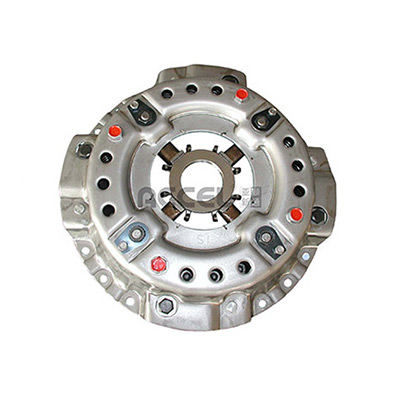- Arabic
- French
- Russian
- Spanish
- Portuguese
- Turkish
- Armenian
- English
- Albanian
- Amharic
- Azerbaijani
- Basque
- Belarusian
- Bengali
- Bosnian
- Bulgarian
- Catalan
- Cebuano
- Corsican
- Croatian
- Czech
- Danish
- Dutch
- Afrikaans
- Esperanto
- Estonian
- Finnish
- Frisian
- Galician
- Georgian
- German
- Greek
- Gujarati
- Haitian Creole
- hausa
- hawaiian
- Hebrew
- Hindi
- Miao
- Hungarian
- Icelandic
- igbo
- Indonesian
- irish
- Italian
- Japanese
- Javanese
- Kannada
- kazakh
- Khmer
- Rwandese
- Korean
- Kurdish
- Kyrgyz
- Lao
- Latin
- Latvian
- Lithuanian
- Luxembourgish
- Macedonian
- Malgashi
- Malay
- Malayalam
- Maltese
- Maori
- Marathi
- Mongolian
- Myanmar
- Nepali
- Norwegian
- Norwegian
- Occitan
- Pashto
- Persian
- Polish
- Punjabi
- Romanian
- Samoan
- Scottish Gaelic
- Serbian
- Sesotho
- Shona
- Sindhi
- Sinhala
- Slovak
- Slovenian
- Somali
- Sundanese
- Swahili
- Swedish
- Tagalog
- Tajik
- Tamil
- Tatar
- Telugu
- Thai
- Turkmen
- Ukrainian
- Urdu
- Uighur
- Uzbek
- Vietnamese
- Welsh
- Bantu
- Yiddish
- Yoruba
- Zulu
តុលា . 18, 2024 19:04 Back to list
Understanding the Functionality and Design of Conveyor Belt Teeth Systems
Understanding Conveyor Belt Teeth Essential Components for Efficient Transportation
Conveyor belts are integral to various industries, providing an efficient means of transporting materials from one point to another. One of the key components that ensure the smooth operation of these systems is the conveyor belt teeth. These teeth, also referred to as cleats or lugs, play a significant role in enhancing the functionality and effectiveness of conveyor belts.
Conveyor belt teeth are specifically designed protrusions attached to the surface of a conveyor belt. Their primary function is to grip the materials being transported, preventing them from slipping backward, especially when the conveyor is inclined. This is particularly crucial in applications such as mining, packaging, and food processing, where maintaining the integrity of the product load is essential.
The design and configuration of conveyor belt teeth can vary significantly depending on the application. Different industries require specific types of teeth; for instance, rubber or plastic teeth are common in food handling due to their non-slip surface and ease of cleaning. In contrast, metal teeth may be used in heavy-duty applications like mining where durability and strength are paramount.
conveyor belt teeth

When selecting the appropriate conveyor belt teeth, several factors must be considered. The height, shape, and spacing of the teeth all influence the belt's performance. Taller teeth provide a better grip for bulkier items, while shorter teeth may be suitable for flat, stable products. The angle of the incline is another critical aspect; steeper angles typically require taller and more robust teeth to prevent slippage.
Material choice is also crucial in the effectiveness of conveyor belt teeth. They must withstand the operational stresses and environmental conditions they are exposed to. For example, in high-temperature environments, heat-resistant materials are essential to prevent deformation. Additionally, the wear resistance of the teeth material plays a significant role in prolonging the lifespan of the conveyor system.
Regular maintenance of conveyor belt teeth is paramount to ensure consistent performance. Over time, wear and tear can lead to diminished effectiveness, resulting in potential product loss or system failure. Regular inspections can help identify any issues early on, allowing for timely repairs or replacements.
In conclusion, conveyor belt teeth may seem like small components, but their impact on the efficiency and reliability of conveyor systems is significant. By carefully considering the design, material, and maintenance of these teeth, industries can optimize their conveyor operations, enhancing productivity and reducing costs. Understanding the importance of these components is essential for anyone involved in the management or design of conveyor systems, ensuring that materials are transported safely and effectively.
-
Korean Auto Parts Timing Belt 24312-37500 For Hyundai/Kia
NewsMar.07,2025
-
7PK2300 90916-T2024 RIBBED BELT POLY V BELT PK BELT
NewsMar.07,2025
-
Chinese Auto Belt Factory 310-2M-22 For BMW/Mercedes-Benz
NewsMar.07,2025
-
Chinese Auto Belt Factory 310-2M-22 For BMW/Mercedes-Benz
NewsMar.07,2025
-
90916-02660 PK Belt 6PK1680 For Toyota
NewsMar.07,2025
-
drive belt serpentine belt
NewsMar.07,2025

